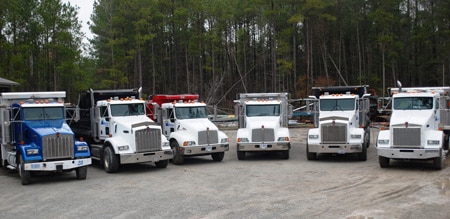DOT Random Testing – Stand Alone or Consortium
Companies regulated by DOT are required to have a random drug testing program. How does this work?
Why does DOT require random drug testing – it is all about safety. As an employer are you concerned about safety? Yes of course and random drug testing prevents accidents and deters drug use.
Each DOT agency sets the annual rates for random testing and defines the safety sensitive employees that must be enrolled in the random testing program. The DOT agencies are: Federal Aviation Administration (FAA), Federal Motor Carrier Safety Administration (FMCSA), Federal Railroad Administration (FRA), Federal Transit Administration (FTA), Pipeline and Hazardous Materials Safety Administration (PHMSA), and the United States Coast Guard (USCG). The FMCSA is the most often that we deal with as it regulates trucks and buses with over 700,000 employers.
A company DOT testing program must always be separate and distinct from your private company or non-DOT testing program. That goes for your random testing pools, too. DOT and non-DOT random testing pools must be completely separate. There are two types of DOT random testing pools – Stand Alone or Consortium.
Stand-Alone Pool – the random testing pool consists of participants of one company, thus a stand-alone company random testing pool. The company has 100 drivers and 100 participants in the pool. For an FMCSA regulated company with 100 drivers in the pool, 50 must be tested for drugs and 10 must be tested for alcohol each year. Any company with 2 or more safety sensitive employees can utilize a standalone pool, but it is highly recommended that if a company has 8 or less employees that they use a Consortium Pool.
Consortium Pool – this involves a grouping of company participants to form a consortium or group pool. Owner operators and other companies with only one safety sensitive position are required to join a consortium pool. The pool might consist of 50 participants as follows:
|
Company A – 1 |
Company D – 2 |
Company G – 8 |
|
Company B – 1 |
Company E – 20 |
Company H – 3 |
|
Company C – 1 |
Company F – 10 |
Company I – 4 |
|
Total: 50 |
25 drug tests needed |
5 alcohol tests needed |
Over the course of the year the consortium pool might pick participants for testing from Company A, C, E, G, and I. The other companies B, D, F, and H are still in compliance as long as the consortium meets its required percentages and follows all the other rules and regulations for the DOT random testing program requirements.
A few items to review in order to have a compliant DOT random testing program:
- Regardless of job titles like supervisor, volunteer, contractor, owner operators, etc., people are chosen for testing based on their job function (known as a safety-sensitive function) not their occupational title.
- Everyone in the pool must have an equal chance of being selected and tested in each selection period.
- A scientifically valid method must be used to select employees for testing, which may include: use of a random-number table, a computer-based random number generator that’s traceable to a specific employee
- Testing must unpredictable and unannounced and be spread equally throughout the year.
- Some folks will be selected more than once, this is truly random.
- Once notified of random selection, an employee must report immediately for random test.
- The use of alternates is not compliant with the DOT regulations.
For questions and guidance on random drug testing programs, stand-alone pools or consortium pools; call Joe Reilly at 866-843-4545 | joe@joereilly.com.







